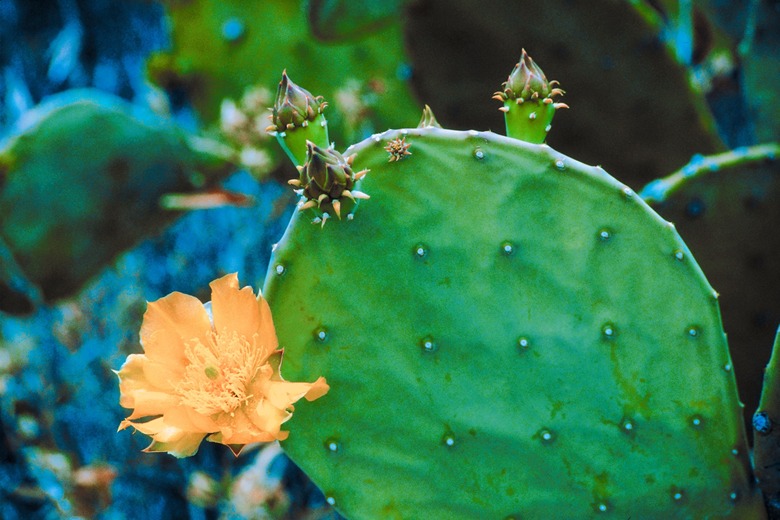Chemicals To Kill Cactus
Cactus plants, such as prickly pear and cholla, are familiar sights in the southwestern United States landscape. Some types of prickly pear grow in the eastern and Midwestern states. Cactus grows well in dry conditions and becomes a pest when it spreads into overused rangelands. Some cacti, such as prickly pear, are difficult to remove manually because little pieces grow into new plants. Chemical herbicides such as 2,4-DP and picloram are effective against cactus.
Cactus plants, such as prickly pear and cholla, are familiar sights in the southwestern United States landscape. Some types of prickly pear grow in the eastern and Midwestern states. Cactus grows well in dry conditions and becomes a pest when it spreads into overused rangelands. Some cacti, such as prickly pear, are difficult to remove manually because little pieces grow into new plants. Chemical herbicides such as 2,4-DP and picloram are effective against cactus.
2,4-DP
The herbicide 2,4-DP is highly effective against cholla. According to the New Mexico State University Cooperative Extension Service, this herbicide kills 95 to 100 percent of target plants. In the spring, use a knapsack power sprayer to apply 2,4-DP diluted in diesel oil and water. Cover all areas of the plant with the herbicide. You can also apply undiluted herbicide to the base of the cholla plant. The herbicide moves through the roots into the plant and kills the plant after two or three years.
- Cactus plants, such as prickly pear and cholla, are familiar sights in the southwestern United States landscape.
- You can also apply undiluted herbicide to the base of the cholla plant.
Picloram
Picloram is an effective herbicide against prickly pear and cholla. Treatment involves either direct application of undiluted picloram or prescribed fires combined with aerial spraying of picloram diluted in water and diesel fuel. According to the New Mexico State University Cooperative Extension Service, you may need to wait two years for target plants to die. Ask your local Extension office about the availability of picloram, which is restricted in many areas.
Triclopyr
Triclopyr is available as either a salt or ester. The University of Florida IFAS Extension recommends triclopyr ester, diluted in water and diesel fuel, for prickly pear control. Direct application of this herbicide in the spring and summer will kill prickly pear within six to eight months. The Western Australia Department of Agriculture and Food recommends triclopyr for the control of prickly pear, which is an invasive plant in that country. Research has not yet determined this herbicide's effectiveness in the midwestern United States.
- Picloram is an effective herbicide against prickly pear and cholla.
- The Western Australia Department of Agriculture and Food recommends triclopyr for the control of prickly pear, which is an invasive plant in that country.
Considerations
Use chemical herbicides carefully and avoid spraying during windy conditions. Read the product label carefully and follow directions precisely. Researchers in the eastern United States are studying groundwater for possible picloram contamination. According to The Texas Journal of Agriculture and Natural Resource, prescribed fires combined with picloram spray may adversely affect wildlife food sources. States place restrictions on herbicide use; ask your local Extension office for a list of permitted use in your area.
